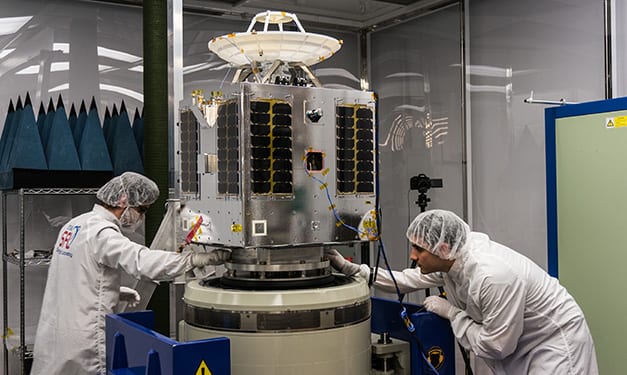What is the Role of Microspace Companies in the NewSpace Revolution?

Photo: UTIAS Space Flight Laboratory
Ever since Space Flight Laboratory (SFL) opened its doors 20 years ago at the University of Toronto Institute for Aerospace Studies (UTIAS), innovations in microspace technologies have led to one satellite revolution after another.
Today, the satellite industry is in the midst of the NewSpace revolution, dominated not by satellite developers, but by service providers. Racing to offer space-based Earth imaging, communications, connectivity, and/or monitoring services (to name a few) at viable price points, these NewSpace ventures have taken the extraordinary step of bringing small satellite manufacturing operations inhouse.
With the NewSpace revolution hitting its stride, the question has been posed: What role, if any, will microspace developers like SFL and other small satellite manufacturers play in this new era? We believe the answer to this question will be driven by the need for innovation and timing.
When SFL was established in 1998, microsatellites existed but were still considered novelties with limited practical utility due to a lack of attitude control technologies. Our lab was created to break through the microsatellite utility barrier with development and 2003 launch of a 57-kilogram space telescope for Canada called MOST.
No sooner had the microsatellite market begun heating up than people naturally started asking what could be done with even smaller platforms — cubesats and nanosatellites. At SFL, we soon found ourselves working on the envelope pushing CanX program, in which we developed high performance attitude control and autonomous formation flight technologies for use with sub-10 kilogramplatforms no bigger than shoeboxes.
The barrier to practical and financially viable nanosatellite utility had been broken, and another era in microspace had begun.
NewSpace may be considered a spin-off from “microspace,” where small satellites are being manufactured not as end products but as platforms to provide space-based services. These integrated companies directly manage larger verticals, including the marketing and sales of the services as well as construction and operation of the satellites. NewSpace companies are data service providers that keep manufacturing inhouse as a way of controlling costs. Indeed, its business models are predicated upon stringent cost-effectiveness in highly competitive markets.
Have NewSpace ventures displaced the need for smallsat developers like SFL whose product is the satellite itself?
We don’t believe so — at least not in the long term. The simple reason is the smallsat developer business model is built around innovation, not manufacturing. Innovation — the ability to develop a succession of smaller satellites, each more advanced than the previous ‑ is what has allowed SFL and other microspace developers to thrive.
The challenge to the NewSpace service providers will come from competition. As its manufacturing group churns out one satellite after another, a competitor will arrive on the scene with satellites that provide the same services, only better or less expensively. The NewSpace company will have to innovate or die.
One option is to stand up an inhouse innovation team, but this is an expensive route that will undermine its cost-sensitive business model. NewSpace companies are likely to find it unnecessary to carry the cost of feeding a top-notch satellite design team if they don’t need new satellite designs every year. In contrast, satellite design is what microspace companies do on a continual basis, for many different applications and mission challenges.
The need for innovation will grow with time. Eventually NewSpace companies may want to turn to proven microspace organizations where innovation is an everyday occurrence. This can only happen if microspace organizations also make changes to its business models and adapt to a different set of needs that embodies NewSpace. So, there is work to be done by both NewSpace companies and microspace organizations to achieve mutual benefit.
Microspace organizations themselves must develop new approaches that bridge its bespoke, labor intensive formulas with semi-automated or automated mass manufacturing. SFL and other developers of smaller satellites will have to shift some of our revenue stream away from manufacturing because NewSpace organizations will keep mass production of satellites inhouse.
With lower manufacturing profits from NewSpace relationships, microspace developers will need to re-write contracts so that revenues are paid for the innovation itself, not the construction of satellites. Under this scenario, NewSpace companies will compensate for innovation in the form of prototypes and then pay reasonable licensing fees for each satellite manufactured according to the newly developed design.
Overall, we view the burgeoning NewSpace business not as a competitor, but as a new revenue source that will complement the traditional — and growing — market for smaller satellites that yield fast returns on investment. At SFL, we expect to continue playing an important role in NewSpace and whatever satellite era comes next.
 Robert E. Zee, PhD, is the director at Space Flight Laboratory’s Microsatellite Sciences and Technology Center at the University of Toronto Institute for Aerospace Studies.
Robert E. Zee, PhD, is the director at Space Flight Laboratory’s Microsatellite Sciences and Technology Center at the University of Toronto Institute for Aerospace Studies.